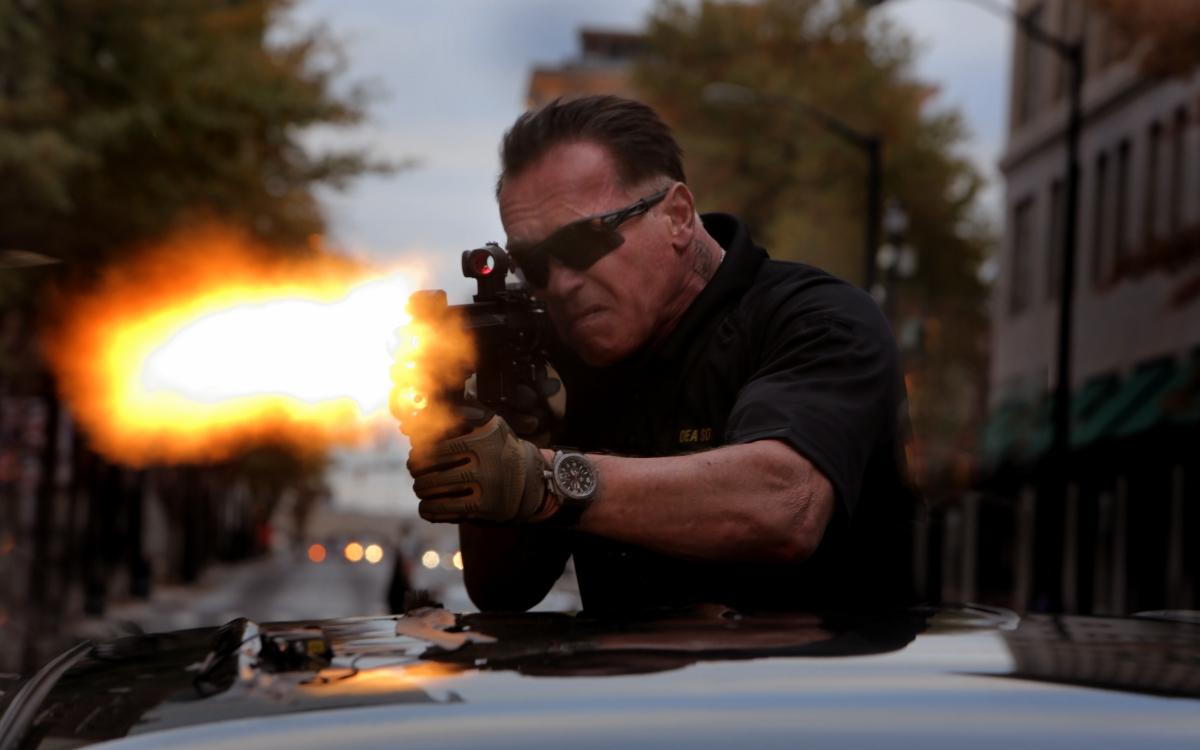
News
Summers Will Not Finish Semester of Teaching as Harvard Investigates Epstein Ties

News
Harvard College Students Report Favoring Divestment from Israel in HUA Survey

News
‘He Should Resign’: Harvard Undergrads Take Hard Line Against Summers Over Epstein Scandal

News
Harvard To Launch New Investigation Into Epstein’s Ties to Summers, Other University Affiliates

News
Harvard Students To Vote on Divestment From Israel in Inaugural HUA Election Survey
"Sabotage" Lacks Intrigue
"Sabotage"—Dir. David Ayer—Open Road Films (3 Stars)

Two photos in “Sabotage”—one with former President Bill Clinton and the other with Barack Obama—are the only suggestions that Arnold Schwarzenegger ever held political office after his acting career, but the film cleverly uses them to highlight the impressive DEA career of Schwarzenegger’s character, John “Breacher” Wharton. With “Sabotage,” Schwarzenegger demonstrates a post-Governator return to form as an action badass—rarely does he appear in a scene sans bulletproof vest and combat shotgun. Wharton serves as the leader of a special operations task force in charge of taking down a drug cartel safe house, and most of the film follows the operation’s aftermath as the team struggles to uncover the killer pursuing them—a whodunit along the lines of Agatha Christie’s novel “And Then There Were None.” Directed and co-written by David Ayer, the film stumbles throughout due to the predictable nature of its plot and lack of substantial character development.
Almost like a horror film, “Sabotage” never attempts to develop the peripheral members of Wharton’s team, resigning itself to compensating with various gruesome murder scenes instead. In fact, each member of the team fits into the same misogynistic, raucous soldier archetype—even Lizzy Murray (Mireille Enos), the lone female squad member, who joins in the . However, Enos delivers a standout performance as the neurotic junkie soldier holding her own with the men, a far cry from her housewife role in 2013’s “World War Z.” Poor writing undercuts Olivia Williams’ effectiveness as Investigator Caroline Brentwood, the police officer in charge of investigating the murders of Wharton’s team. Her lack of chemistry with Schwarzenegger is immediately apparent, and the two deeply emotional scenes that they share—one melancholy, one romantic—come off as comically stilted and unconvincing. Brentwood’s fling with Wharton is shoehorned into the plot as an afterthought, as if the writers abruptly realized two acts into the film that their leading man lacked a love interest.
Despite Ayer’s most recent directorial and writing success with 2012’s “End of Watch,” which delivered a compelling, character-driven narrative, “Sabotage” seems motivated purely by plot, attempting to showcase Schwarzenegger shooting villains as much as possible. Although not particularly innovative, the action scenes convey a deliberate sense of urgency, from the breach and clear of the cartel house at the film’s opening to the innovative car chase near the film’s end. Additionally, gore and blood are expertly used for dramatic effect in various death scenes, which include a train decapitation as well as a disemboweling. The added element of surprise from random sniper headshots also helps to keep the audience on their feet.
“Sabotage” has moments of humor as well, although some are unintentional. One of Arnold Schwarzenegger’s best lines to date takes place during a heated exchange with a police officer, when he shouts, “Fuck you and your 48% body fat!” before storming out of the room. Jackson (Harold Perrineau), Investigator Brentwood’s partner, also serves as a moderately successful source of comic relief between tense action scenes with his playful banter. On the other hand, the film’s likely product placement deal with Pabst Blue Ribbon makes certain scenes unintentionally comical—whether at a strip club or a wake, the drink of choice for these toughened, goatee-sporting DEA soldiers also happens to be the preferred drink of scrawny hipsters everywhere.
The film’s third act diverges from its predictable narrative filled with action clichés through a subplot that attempts to lend additional emotional depth and shades of moral ambiguity to Schwarzenegger’s character. Unfortunately, Schwarzenegger fails to fully capture this added complexity, and a plot innovation this late in the film doesn’t salvage its earlier poor writing. Although Ayer puts forth an entertaining and pulse-racing action vehicle for Schwarzenegger’s revived action career, it ultimately fails to meet the high standards of originality and characterization set by his previous work.
—Staff writer Alan R. Xie '16 can be reached at alan.xie@thecrimson.com.
Want to keep up with breaking news? Subscribe to our email newsletter.
